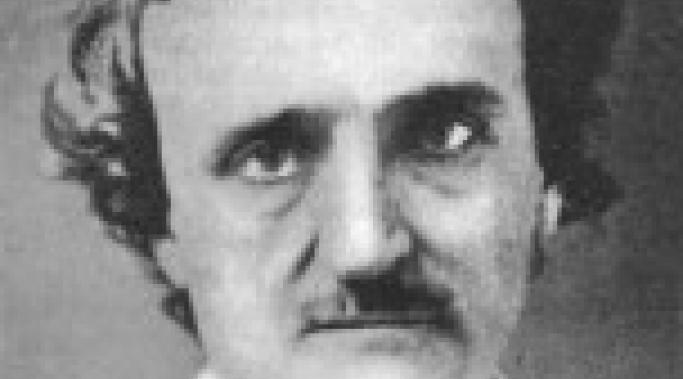This is the season of vacations, and let’s be honest, no matter who you are or what you do, a break from the demands of your daily existence would be welcome. Interestingly, no matter how glamorous your day job might be, research indicates that when you vacation you want to get as far away from it as you can.
For example, a recent study by psychologists at The University Of Basingstoke revealed that 77% percent of NFL quarterbacks said scrapbooking is their favorite leisure activity, with interpretive dance running a distant second.
Pickpockets, not surprisingly, take a break from the rigors of their job by vacationing in nudist colonies. Without a scrap of temptation to be found they are safe from themselves and can unwind, secure in the knowledge that work is not even an option.
Voyeurs, by contrast, go Polar to relax – North and South – in search of climate so ferociously cold that inhabitants must stay clothed 24/7. Freed from the prison of their pathology they take up residence in the safe, warm expanse of imagination – like the rest of us.
Funny in the Head
This is the golden age of political correctness, and for the mentally ill in our midst, it simply couldn’t happen soon enough. Horrible slurs like porridge-head, cracker academy graduate, and el whackadente have been replaced by culturally sensitive terms such as, unreality-enabled, extra-normal, and sanity-challenged.
But removing the fangs from common speech is just the beginning. Increasingly there is sensitivity about what questions may be considered appropriate to ask a person wrestling with mental illness. Here are just a few of the most common of them, now considered intrusive, prejudicial, stereotypical, and rude.
1. Why don’t you just get over it?
2. Is what you’ve got really a disease, or it is it just a character flaw?
3. Did you ever try growing up?
4. Why is there a duck on your head?
5. Have you looked into Scientology?
I’m glad to report that the use of knee-jerk, judgmental questions like these is on the way out. But my feeling is, why stop there? Now that we’ve built up a little momentum, let’s expand the list of verboten phrases – questions and comments simply off limits when it comes to the mentally ill among us.
Mental illness is a vibrant, evolving discipline that is never the same two days in a row. The skilled professionals in our midst are continually wrestling disorders and syndromes to the ground, subduing them, and teaching the rest of us how to deny them a second chance.
But, to paraphrase Zig Zigler, “Every time a window slams shut on your fingers, a trap door to the basement opens.” In other words, mental illnesses are leaving us all the time, but new ones are always emerging to take their place. Indeed, without a steady stream of newly minted mental illnesses producing an endless succession of chat show guests, virtually all TV hosts would be unemployed.
While the traditional wellsprings of mental illness may still be relied upon, forward thinking psychiatrists, pharmaceutical companies, and tattoo parlors are looking to social networking – dubbed “social nutworking” by insiders – as the greatest growth area for psychological disorders in years to come.
Here are just two of the newly minted mental disorders resulting from our cultural obsession with water-skiing squirrels.
According to a recently released survey conducted by The National Association of National Associations, your choice of vehicle may be telling the world a whole lot more about you than you think, in fact, it might even reveal what, if any, form of mental illness hounds you, dogs your every step, and accounts for ruff patches in your life.
Ashton Frampton, spokesman for the HMMA (Heavy Mental Motoring Association), which sponsored the study, put it like this. “While automobile ownership is not proof of insanity, we have noticed that many different forms of mental illness track closely with specific cars. To start with a very simple example, every Hum V owner in the study was plagued by delusions of other people’s grandeur.
For years, members of The National Association of Mental Health Professionals Hoping To Influence Public Perceptions of Whackadoomiousness (NAMHPHIPPW) have sought out ways of educating the public, eroding stigma, and charging off expensive lunches at swank restaurants.
The PR wing of this advocacy organization is very excited about a new, innovative public awareness campaign they’re calling, Odd Aid. NAMHPHIPPW officials agree that the best way to shift cultural perceptions is by going directly to popular public figures. Building on the success of Live Aid and Farm Aid, Odd Aid will feature a host of legendary performers; with one important difference.
Every participating Odd Aid artist will be performing an original song specifically designed to shed light on a particular form of mental illness. Stigma beware; this plethora of plucky performers is out to get you!
Passive/Aggressive Behavior (PAB) plays an integral role in various kinds of mental illness. Historically referred to as Obnoxious Behavior (OB) or just plain Irritating Behavior (IB), Passive/Aggressive Behavior has been identified as both symptom and cause of a dizzying assortment of psychological maladies including, but not limited to, paranoia, paranormia, pareschewed, and Chumley Standpipe Syndrome (CSS).
Early psychiatrists, realizing PAB to be a very sneaky and elusive foe, adapted an innovative approach to treatment. They reasoned that, rather than causing patients to feel guilt about passive aggressive behavior, long-term recovery goals would be much better served by luring PAB out of its lair with promises of rewards, praise, and lucrative commercial endorsements. Far easier to treat a condition after it’s ventured into the open, they reasoned.
Regular visitors to Funny In The Head know that it is a mental health humor blog. I rarely, if ever, reveal anything resembling a personal detail. As a long-term professional writer, I am very careful, and selective, about what I do and do not say. Like a spy, I know how to offer only the appearance of self-disclosure. As a mentally ill person moving incognito among “sane” citizens, one becomes a skillful actor.
Saying Goodbye to Shame and Stigma Around Mental Illness
However, I am temporarily discarding this policy. Shamelessness has been a wonderful byproduct of my recovery and there is little I am not willing to do in the battle against mental illness stigma.
When I began writing Invisible Driving (my bipolar memoir) in 1990, I realized there was no longer any room for privacy, anonymity, and secrets. Terrified, confused, and completely overwhelmed, I painstakingly recreated the bizarre and harrowing odyssey; thereby taking charge of my own healing. That, dear friends, was transformational.
The journey lasted many years; I worked hard. In diverse settings I received kindness, guidance, and wisdom from a wide spectrum of wonderful people. Triumph over fear and shame, acceptance of life as it is, celebration of self, and peace of mind, grew gradually through the incremental process of recovery.
For decades, mental health professionals have reminded anyone willing to listen that infirmities of the mind are underrepresented in popular culture. They point to a paucity of pithy portrayals in film, literature, television, puppet shows, and motivational seminars. How, they ask, will maladies of irrationality ever shed their stigma, (to say nothing of the cloudy cloaks of ignorance surrounding them), until awareness, like sunlight succeeding a deluge, warms the landscape?
A handful of well-known advocacy groups; YABA (Young American Bipolar Association), DABA (Deranged American Benevolent Association), and DEW (West End Dyslexics), have lobbied tenaciously to insinuate mental health awareness into all aspects of our culture, if culture is really the right word. Recently they scored a major hit in that universally feared arbiter of societal acceptability, the SAT.
Savvy marketers everywhere understand that branding is an essential element of market domination, sustained growth, and “share of mind”. Put simply, your brand is your customer’s opinion of you, a complete set of assumptions which influence every interaction.
Much has been made about the relationship between mental illness and artistic creativity. To test this theory, I’ve assembled some of the most famous first lines in fiction. Your challenge is to match them with their book of origin, the author of that book, and – this is the important part – the mental illness that prompted the passage.
For example:
First Sentence: “We were somewhere around Barstow on the edge of the desert when the drugs began to take hold.”
Book: Fear and Loathing in Las Vegas
Author: Hunter S. Thompson
Mental Illness: Chemical dependency & narcissism.
Easy, right? Okay, here we go. Good luck!









